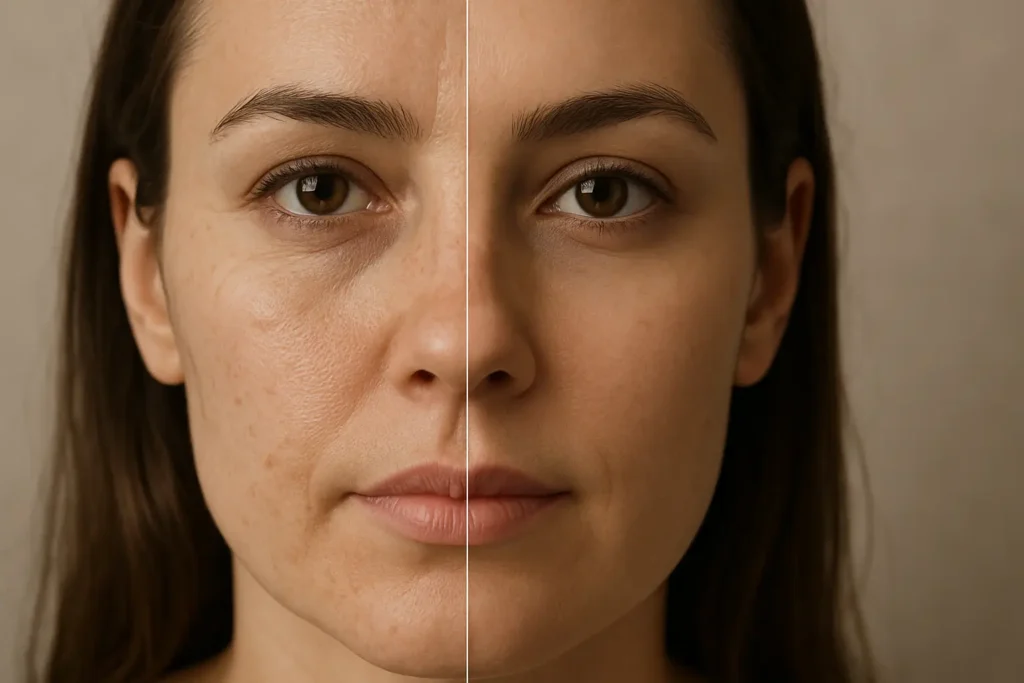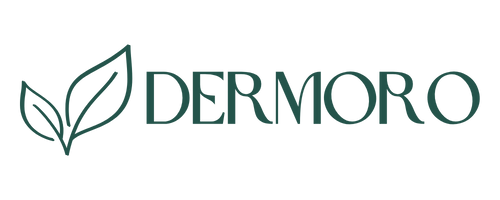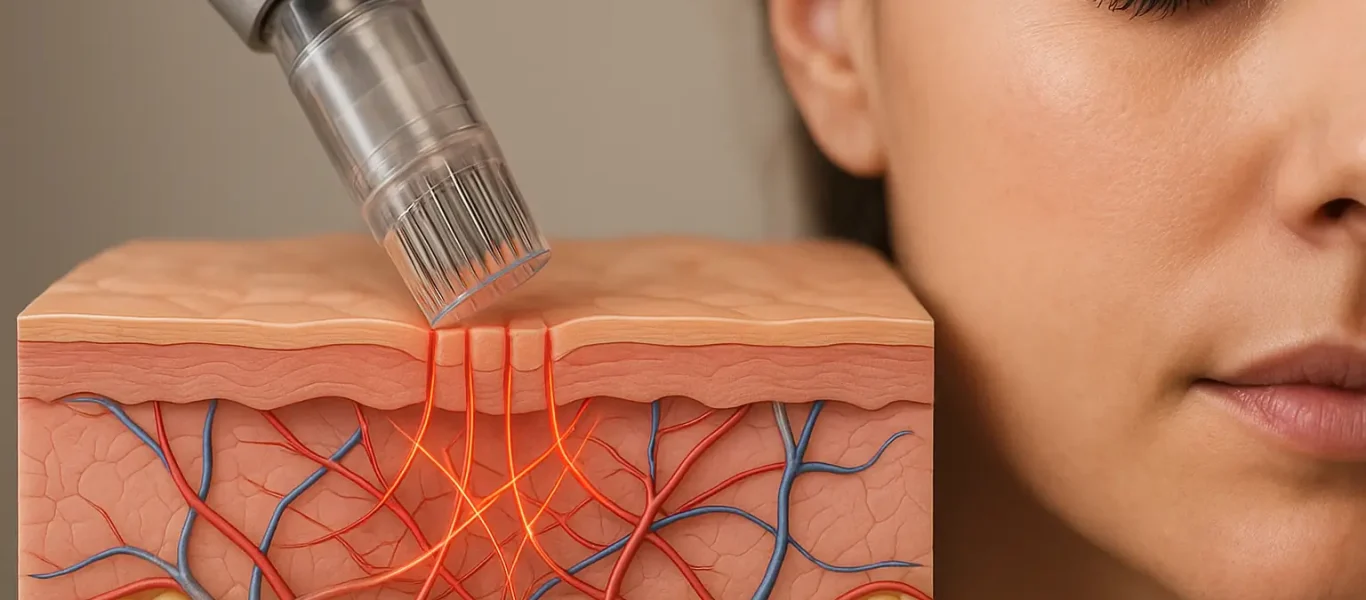Microneedling, also known as collagen induction therapy, is a minimally invasive dermatological procedure designed to rejuvenate the skin by stimulating its natural healing processes. By creating controlled micro-injuries, it encourages the production of collagen and elastin, essential proteins for maintaining skin firmness and elasticity. Initially developed for skin rejuvenation, microneedling has become popular for treating acne scars, wrinkles, hyperpigmentation, and stretch marks due to its simplicity, safety, and effectiveness.
Scientific Mechanism of Microneedling
Creation of Micro-Injuries
Microneedling involves the use of devices equipped with fine needles to create thousands of tiny punctures in the skin. These micro-injuries are controlled to target specific skin layers:
- Professional Devices: Automated pens or radiofrequency microneedling devices penetrate 2–3 mm, reaching both the epidermis (outer layer) and dermis (deeper layer), where collagen production occurs.
- At-Home Devices: Dermarollers typically penetrate only 0.25–0.5 mm, affecting the epidermis superficially and offering less dramatic results.
These punctures are designed to minimize epidermal damage while stimulating deeper dermal layers.
Wound Healing Cascade
The micro-injuries trigger the body’s natural wound-healing response, which occurs in several phases:
- Inflammation: The initial response to micro-injuries involves mild inflammation, signaling the release of growth factors such as transforming growth factor-beta (TGF-β) and platelet-derived growth factor (PDGF).
- Fibroblast Activation: These growth factors activate fibroblasts, the cells responsible for producing collagen and elastin. Fibroblasts reorganize existing collagen fibers and deposit new ones, a process known as dermal remodeling.
This cascade is critical for initiating the structural changes that improve skin quality.
Collagen and Elastin Production
Collagen provides structural support, while elastin ensures skin elasticity. Both proteins naturally decline with age, leading to wrinkles and sagging. Microneedling stimulates their production by:
- Tricking the skin into perceiving injury, prompting repair through collagen synthesis.
- Enhancing fibroblast activity, which increases collagen and elastin deposition over time.
Pre-treatment with vitamin A or C creams may be recommended a month prior to boost collagen production.
Skin Remodeling and Neo-Vascularization
The healing process leads to dermal remodeling, where new collagen strengthens the skin’s structure. Additionally, microneedling promotes neo-vascularization, the formation of new blood vessels, which improves blood flow and nutrient delivery. This results in:
- Smoother, thicker skin.
- A more even complexion due to enhanced cell turnover.
Benefits for Skin Texture Improvement
Microneedling is highly effective for addressing various skin concerns:
- Acne Scars: Breaks down scar tissue and fills depressions through collagen production.
- Wrinkles and Fine Lines: Plumps the skin, reducing the appearance of aging signs.
- Stretch Marks: Improves texture and appearance over multiple sessions.
- Hyperpigmentation: Enhances cell turnover, reducing dark spots and uneven tone.
Results typically become visible after 3–6 months, with 3–5 treatments spaced 3–8 weeks apart recommended for optimal outcomes. Annual maintenance sessions help sustain results.

Comparison with Other Treatments
Microneedling stands out for its minimal invasiveness compared to alternatives like laser therapy, chemical peels, or dermabrasion. Key advantages include:
- Lower Risk for Darker Skin Tones: Unlike heat-based treatments, microneedling avoids pigmentation changes, making it suitable for diverse skin types.
- Minimal Downtime: Redness subsides within 24–48 hours, allowing quick return to normal activities.
- Cost-Effectiveness: It is generally less expensive than laser treatments.
Techniques and Devices
Microneedling employs various devices tailored to treatment goals:
- Manual Dermarollers: Used for at-home treatments, these have limited depth (0.25–0.5 mm) and are less effective for deep scars.
- Automated Pen Devices: Professional tools penetrate up to 2.5 mm, offering precise control for targeting deeper skin layers.
- Radiofrequency Microneedling: Combines needling with heat to enhance collagen stimulation and skin tightening.
Combination therapies, such as applying platelet-rich plasma (PRP) or topical serums through microchannels, can enhance results by improving ingredient absorption.
Treatment Considerations
- Session Frequency: Most patients require 3–5 sessions, spaced 3–8 weeks apart, with results appearing over 3–6 months.
- Pre-Treatment: Applying vitamin A or C creams a month prior may enhance collagen production.
- Post-Treatment: Mild redness may occur for 24–48 hours, but recovery is quick with proper aftercare.
- Safety: When performed by trained professionals with sterile equipment, risks like infection are minimal.
| Aspect | Details |
|---|---|
| Mechanism | Creates micro-injuries to trigger wound healing and collagen production. |
| Collagen Stimulation | Activates fibroblasts via growth factors (TGF-β, PDGF) for collagen and elastin synthesis. |
| Skin Texture Benefits | Reduces acne scars, wrinkles, stretch marks; improves tone and elasticity. |
| Devices | Dermarollers (0.25–0.5 mm), automated pens (up to 2.5 mm), radiofrequency microneedling. |
| Treatment Plan | 3–5 sessions, 3–8 weeks apart; results in 3–6 months; annual maintenance. |
| Safety | Minimal downtime, low risk for darker skin tones, requires sterile equipment. |
Frequently Ask Question’s
- How does microneedling trigger collagen production at the cellular level?
It creates micro-injuries that activate fibroblasts to produce new collagen and elastin. - What growth factors are released during microneedling?
Growth factors like TGF-β and PDGF are released, promoting healing and collagen synthesis. - How do fibroblasts respond to microtrauma?
They migrate to injury sites and increase collagen and elastin production for skin repair. - Does microneedling stimulate Type I or Type III collagen more?
It stimulates both, with Type III appearing early and Type I providing long-term strength. - What role does the wound healing cascade play?
It orchestrates tissue repair, leading to new collagen formation after micro-injuries. - How many sessions are needed for visible collagen changes?
Typically 3-6 sessions, spaced 4-6 weeks apart, for noticeable improvements. - How long does collagen stimulation last?
Collagen production peaks around 4-6 weeks post-treatment and can last for months. - Can microneedling reverse aging collagen loss?
Yes, it stimulates new collagen, improving skin firmness and reducing wrinkles. - How does microneedling compare to laser treatments?
Both stimulate collagen; microneedling is less invasive with fewer side effects. - Does combining microneedling with PRP enhance collagen?
Yes, PRP provides growth factors that boost collagen production. - How does needle depth affect collagen stimulation?
Deeper needles reach the dermis, stimulating more collagen but with increased downtime. - Can overstimulation damage collagen?
Excessive treatments may impair healing; moderation ensures safe collagen growth. - How does microneedling help with acne scars?
It promotes collagen in scar tissue, smoothing and lifting the skin surface. - What pathways activate collagen genes?
Mechanical stress triggers signaling pathways like TGF-β that promote collagen gene expression. - How do devices like dermarollers compare to motorized pens?
Motorized devices offer consistent depth and coverage, optimizing collagen stimulation. - Can topical serums improve collagen synthesis post-microneedling?
Yes, applying growth factors or peptides enhances collagen regeneration. - How do repeated treatments affect long-term collagen levels?
Multiple sessions can build a reservoir of new collagen, providing lasting results. - Are there risks of abnormal collagen response?
Rarely, over-treatment can cause scarring or hyperplasia; proper protocols prevent this. - What is the main benefit of microneedling for skin texture?
It stimulates collagen, leading to smoother, firmer, and more even skin. - Does microneedling work on all skin types?
Yes, it’s safe for most skin types, with minimal risk of hyperpigmentation.




